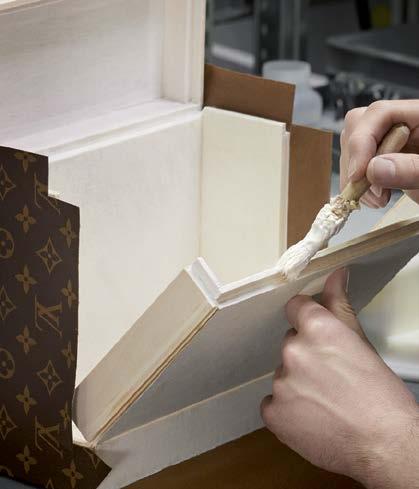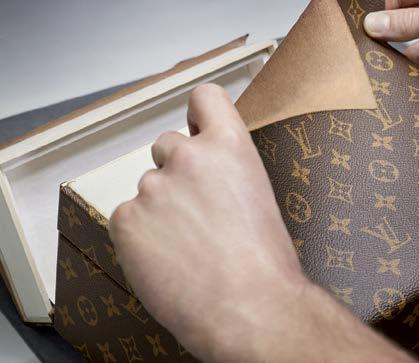
15 minute read
FASHION
THE HENDERSON
DESTIN, FLORIDA Reminiscent of a luxurious grand seaside manor of yesteryear, the Henderson, a Salamander Beach & Spa Resort, seamlessly blends the present and past framed by the quintessentially picture-perfect beach resort town of Destin. Adjacent to 200 acres of pristine preserve and steps away from miles of sugar-white sand beaches and the endless emerald green ocean of Florida’s northwest Gulf Coast, this resort manages to be both a home away from home and also a true paradise. The romance of traditional coastal architecture — striking shingles and steep gable rooflines — merges with fresh coastal décor in each of the 170 guest rooms and suites, which, by the way, all have sweeping balconies or terraces where you can watch the spectacular sunsets over the Gulf of Mexico. Trust us: A trip here is like discovering one of life’s greatest little secrets. hendersonbeachresort.com
THE RICHARD
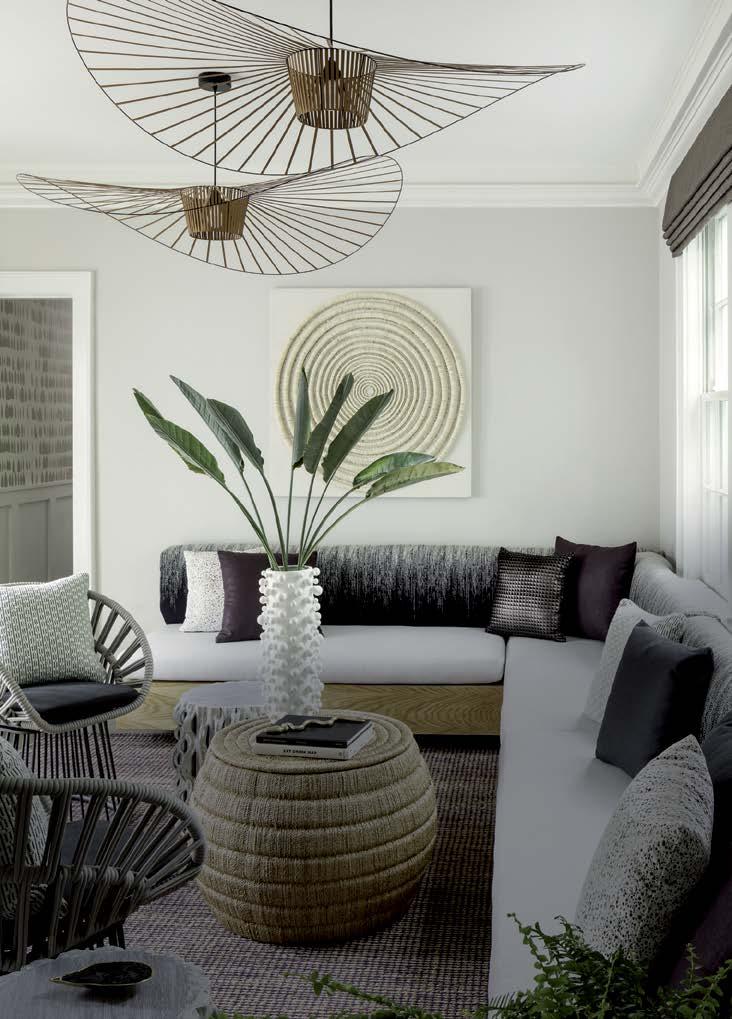
EDGARTOWN, MARTHA’S VINEYARD, MASSACHUSETTS The hottest new hotel in the quaint and ritzy seaside town of Edgartown — the preppiest of locales on Martha’s Vineyard — is the Richard. At this Edgartown Collection property just a stone’s throw from the Atlantic, guests will discover 16 handsomely decorated guest rooms in warm neutrals and bright whites punctuated by deep, sumptuous accents of pure black, emerald and regal purple, as well as luxe lounges that pay homage to the quintessential coastal New England aesthetic. A wraparound porch and sleek cement fire pit surrounded by modern wicker seating and lush greenery provide the perfect setting for a relaxing summertime escape. The Edgartown Collection, a series of four, Edgartown-based, recently renovated properties, is owned by Charles Hajjar, a Milton, Mass.-based developer, and his family. The properties also include the Sydney, which features the culinary stylings of gourmet eatery L’Etoile; the Christopher, a chic boutique hotel on Water Street; and the Edgartown Inn Hotel, a classic coastal Captain’s home. theedgartowncollection.com/the-richard
LIFE HOUSE NANTUCKET
NANTUCKET, MASSACHUSETTS What’s in a name? At Life House, a technology-forward lifestyle hotel brand (the first of its kind to ever be fully backed by Silicon Valley, in fact), well, everything. Though the property caters to Gen Z — its check-in, opt-in mobile app and social network allow guests to interact with one another, along with vetted locals — it manages to seamlessly blend the new with the old, thanks to its location in an 1830s-era Federal-style mansion that once belonged to a former sea captain. In honoring its history and location, the design narrative of Life House Nantucket is that of a nonchalant innkeeper’s humble abode. The House also reflects a nostalgic musing for the island’s native botany, fostering a retreat for holistic wellness, with raffia writing desks and botanical walk-in shower details. Each of the 14 rooms is individually styled with local art, vintage artifacts and inspired textures, Diptyque scents, Le Labo bath products, Marshall speakers and Revival luxury linens. For those sick of social distancing, this is the place to be: there’s a 300-square-foot living room and kitchen with plentiful seating, as well as a 675-square-foot garden lounge with daybeds and a communal minibar, perfect for safe yet necessary engagement. lifehousehotels.com/hotels/new-england/nantucket

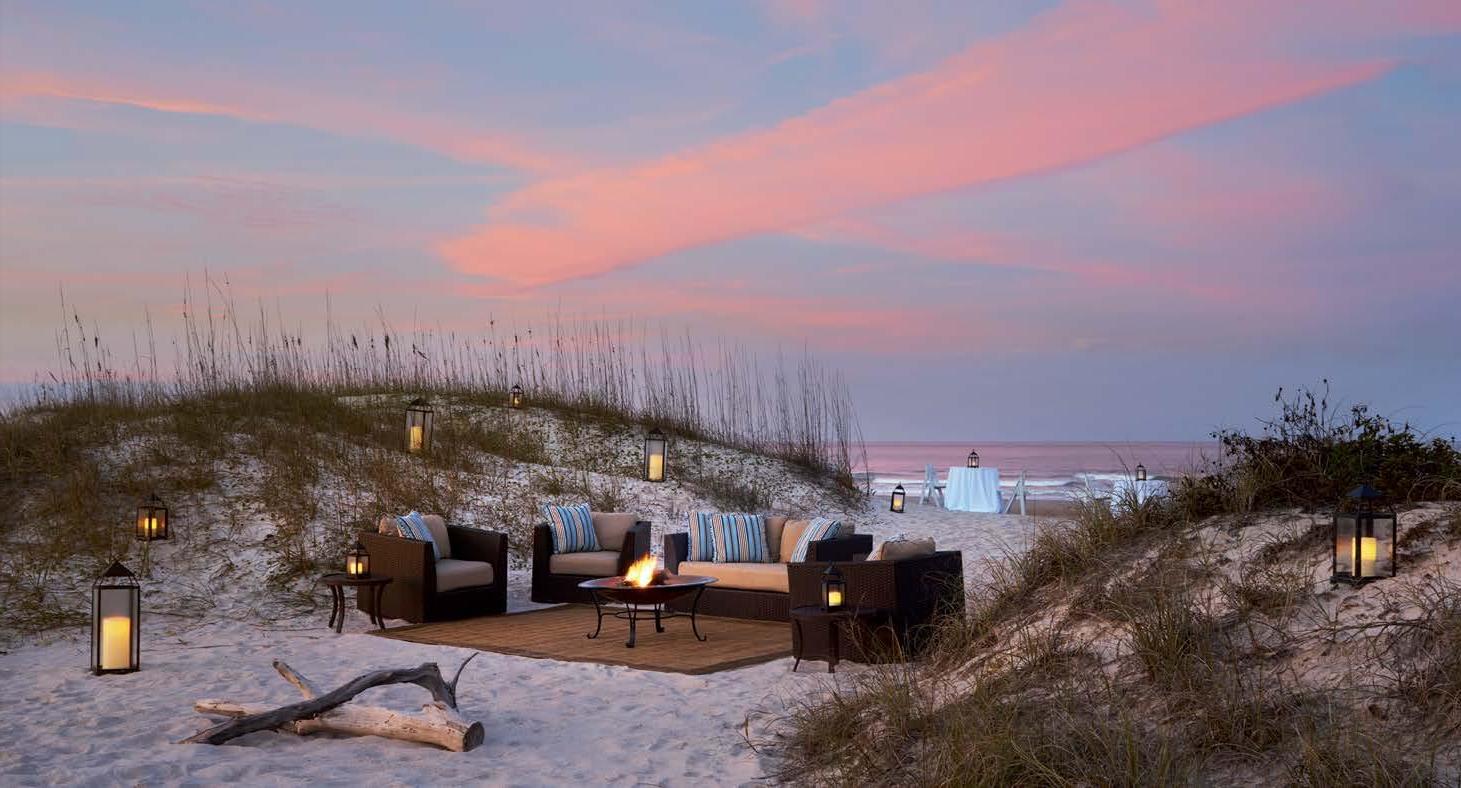
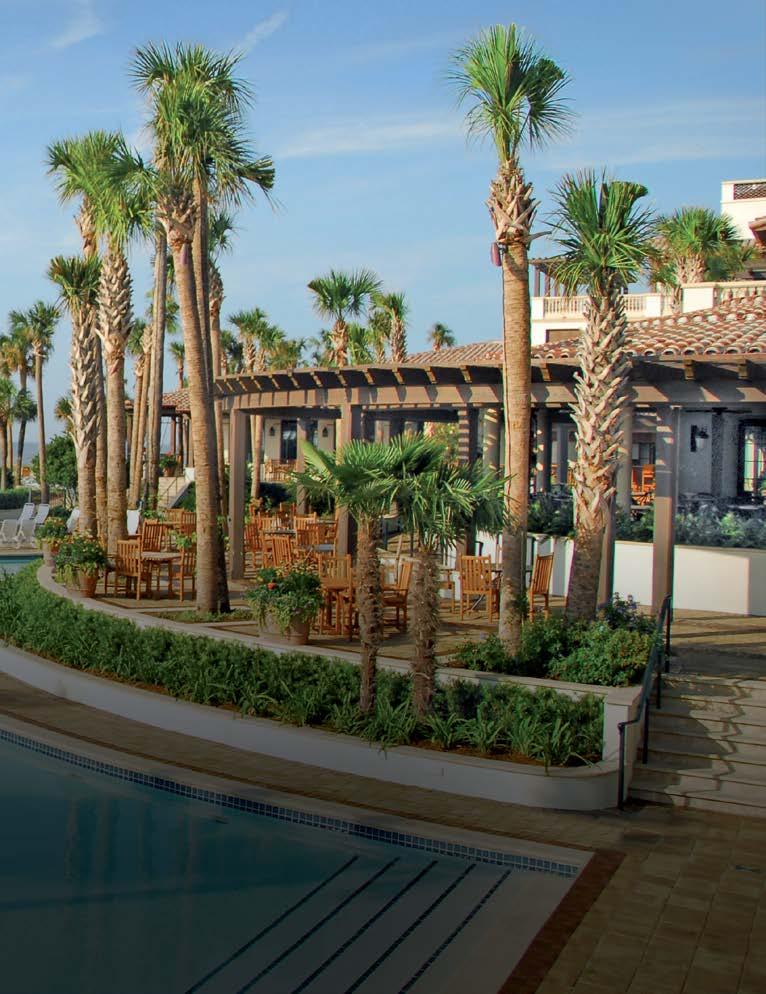
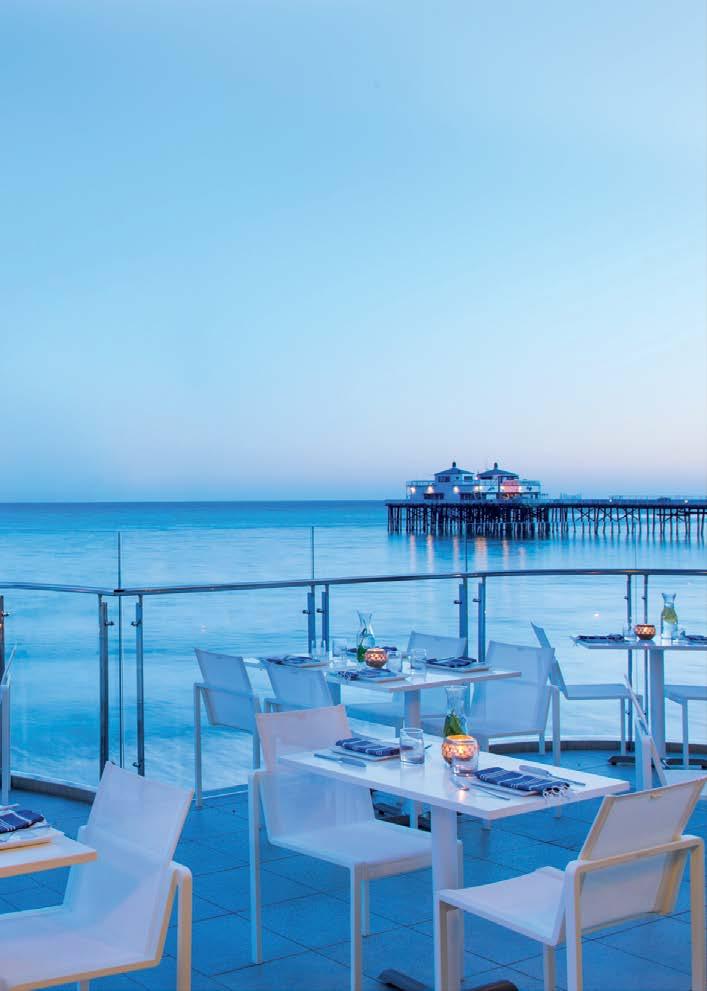
PHOTOS COURTESY OF (CLOCKWISE FROM TOP) RITZ-CARLTON AMELIA ISLAND, MALIBU BEACH INN, THE CLOISTER AT SEA ISLAND
RITZ-CARLTON AMELIA ISLAND
FERNANDINA BEACH, FLORIDA Situated on a remote barrier island, the Ritz-Carlton Amelia Island is an idyllic beachfront escape with 13 miles of expansive private beaches and naturedriven experiences, perfect for those who prefer to spend their days soaking up endless amounts of sunshine. This year, the resort began a new chapter with the debut of a renovation of guest rooms and suites — redone in a sophisticated palette grounded in the rich neutral tones of the land and accented with the colors of the sand, sea and lush Spanish moss and live oaks indicative of the area, as well as multiple large-scale custom panoramic photographic artworks by Jorge de la Torriente; three new culinary venues; nature-based experiences, such as an ecology field trip and personal wellness retreats; and a Year of the Pearl campaign in celebration of the hotel’s 30th anniversary, featuring pearl-themed programming and partnerships. The Year of the Pearl package includes a knotted 54-inch necklace with freshwater coin pearls, overnight accommodations on the Ritz-Carlton Club level or in an Ocean Front Suite, a commemorative Year of the Pearl pastry amenity and breakfast for two, among other offerings. ritzcarlton.com/en/hotels/florida/amelia-island
MALIBU BEACH INN
MALIBU, CALIFORNIA If there’s a beach more beloved by the jet set anywhere in America outside of Malibu’s Carbon Beach, we haven’t found it — especially given that this mile-long stretch of sand is commonly referred to as “Billionaire’s Beach.” And for those who want to stay and play like Oracle founder Larry Ellison and entertainment guru David Geffen, only the Malibu Beach Inn will do. Quite simply, this 47-room hotel is glorious. Each of its nautically themed, well-appointed guest rooms — part of a recent redesign by Waldo Fernandez that includes Toto toilets, Smeg teakettles, Nespresso coffee machines and Bose entertainment systems — showcase amazing views of the Pacific Ocean (with provided binoculars for dolphin and whale spotting, no less), so the soothing sound of waves lull you to sleep each night. Make sure to check out the Pacific- and Mediterranean-inspired menus of the on-site Carbon Beach Club restaurant (CBC), which uses locally sourced ingredients from One Gun Ranch and resident farmers markets, as well as new summertime culinary offerings like an intimate beachside picnic for two designed by the Picnic Collective. There are a slew of new wellness options too, including a 45-minute guided meditation with the Mindry, a local Malibu meditation studio, as well as private Fliteboard lessons. malibubeachinn.com
THE LODGE AT SEA ISLAND
SEA ISLAND, GEORGIA Sea Island is an exclusive coastal resort island surrounded by five miles of private, pristine Atlantic Ocean beach. Designed by renowned Palm Beach architect Addison Mizner in 1928, the Cloister at Sea Island is a Mediterranean masterpiece that preserves the original architecture’s lustrous history and Southern essence. Uniquely designed rooms are defined by elegance, sophistication and comfort, featuring gleaming wood furnishings, exposed beam ceilings, overstuffed chairs, hardwood floors and handmade Turkish rugs. From a bird’s-eye view, the Cloister encompasses a sprawling range of world-class buildings and amenities, including the Sea Island Yacht Club, the Spa at Sea Island and the Sea Island Beach Club. Travelers also come for the plethora of amenities here, the standout of which is golf. The Sea Island Golf Performance Center is a state-of-the art facility that offers an indoor video studio, 300 yards of teeing area, target greens, short-game areas and an exclusive club-fitting service; the Performance Center, with its holistic, multidisciplinary approach to the game and exemplary instructors, welcomes some of the top PGA professionals for training. Sea Island Golf Club’s 18-hole championship courses are situated on some of the country’s most breathtaking landscapes. There’s also tennis, squash, beach horseback riding, a shooting school, nature curation and education programming, a beach club and more. If a beach vacation is all you’re after, you can have that here… and so much more. seaisland.com
TOURIST VS. PURIST
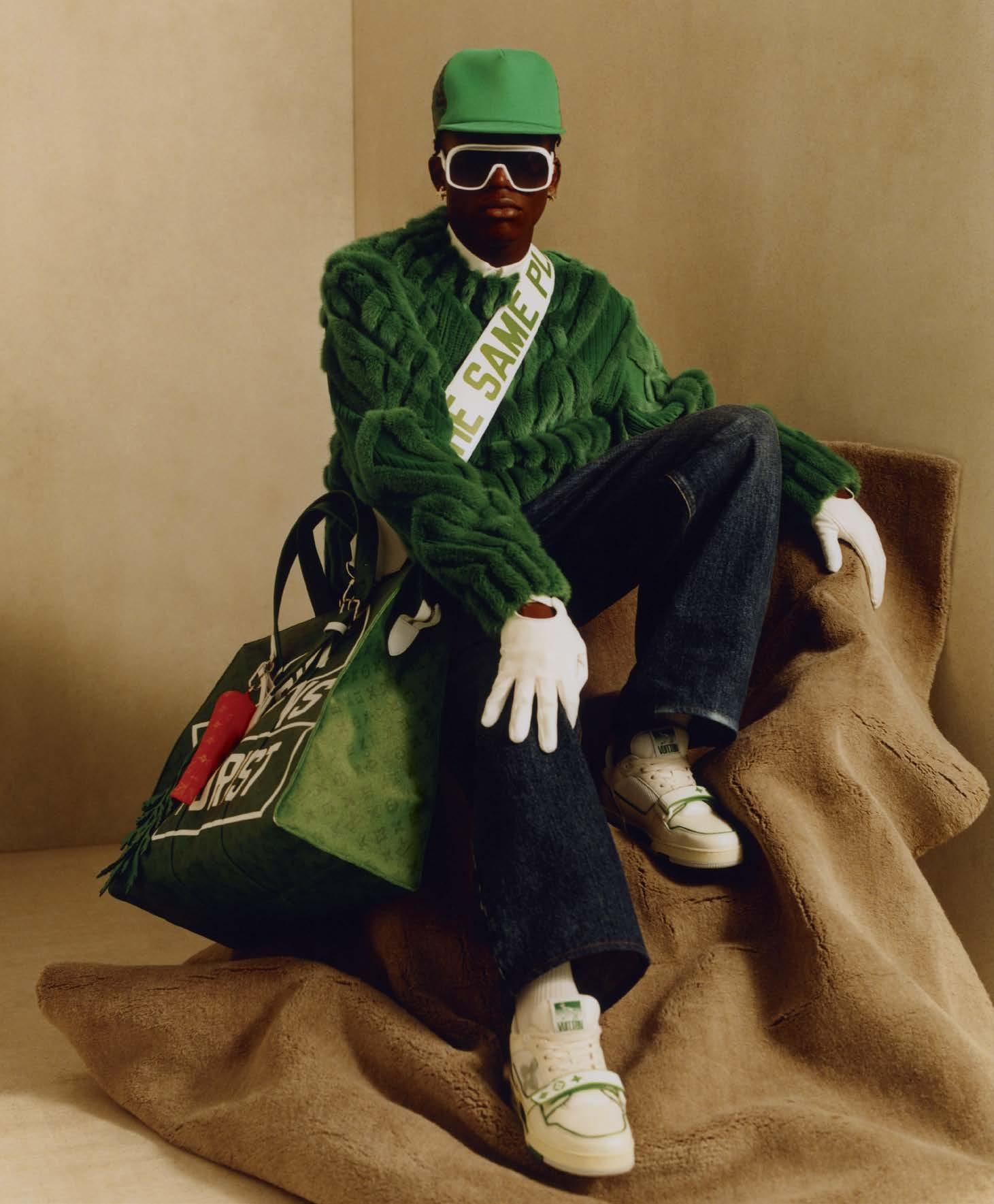
–VIRGIL ABLOH
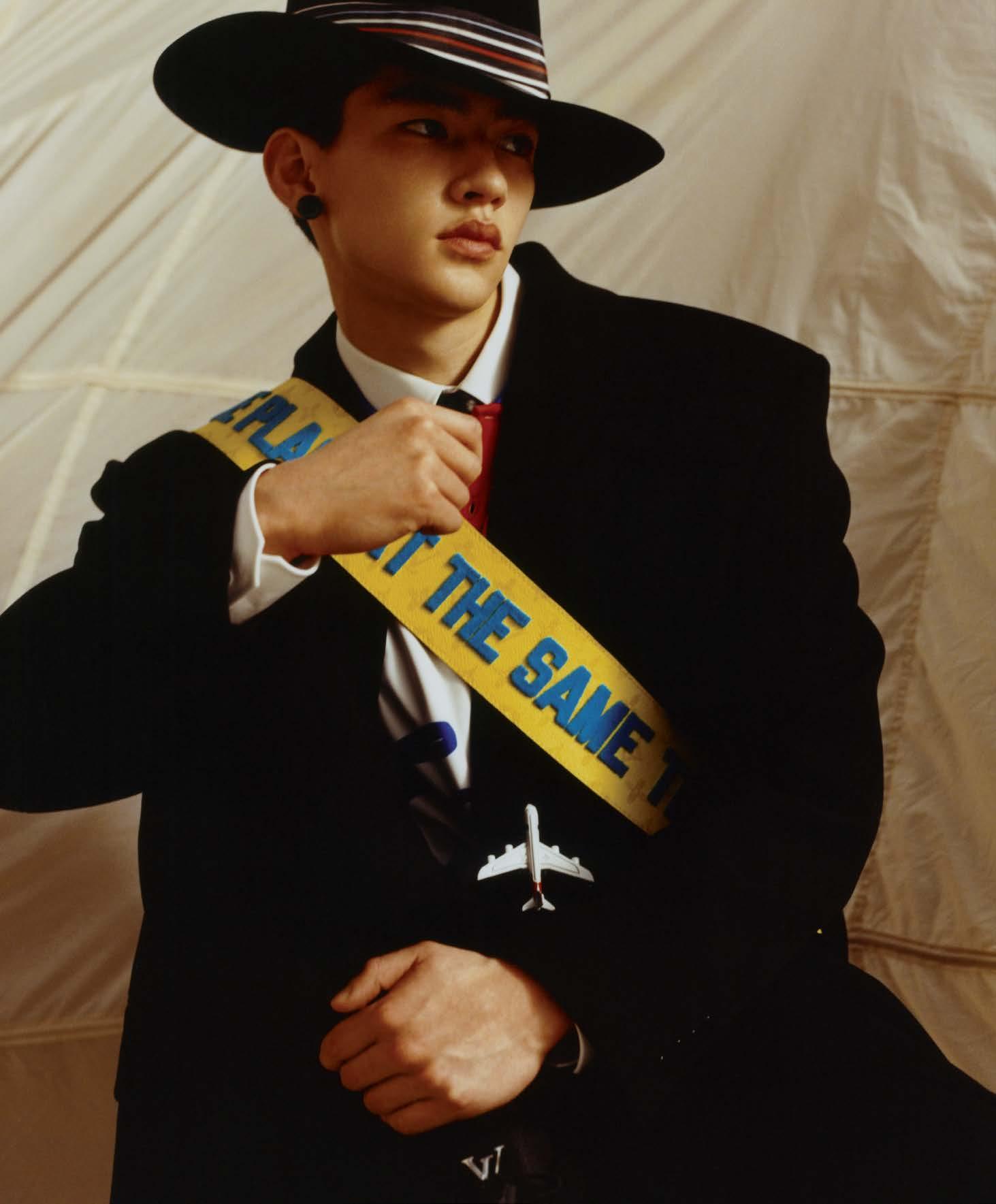
For the Louis Vuitton Fall-Winter 2021 Men’s Collection, men’s artistic director Virgil Abloh intricately explores the unconscious biases and predetermined perceptions connected to the genetics of people, ideas and art through fashion. Abloh’s sixth collection, Ebonics, brings his established idea of “Tourist vs. Purist” to life: the tourist is the curious outsider who observes and aspires to an esoteric domain of knowledge, while the purist is the insider who innately has it. This poetic collection reveals their respective codes to defy and unite them through amplified wardrobe essentials and Vuitton menswear signatures such as dramatic duster coats, tailored suits and vibrant knits in colorful textures with the iconic LV motif.
BY ADRIENNE FAUROTE PHOTOGRAPHER THEO DE GUELTZL MODELS FELIX CHEONG MACLEOD, ADAMA KONATE, OMAR SESAY,
KAI ISAIAH JAMAL, JASON FRANCIS, VASSILI SCHNEIDER
ALL CLOTHING AND ACCESSORIES BY LOUIS VUITTON MEN’S
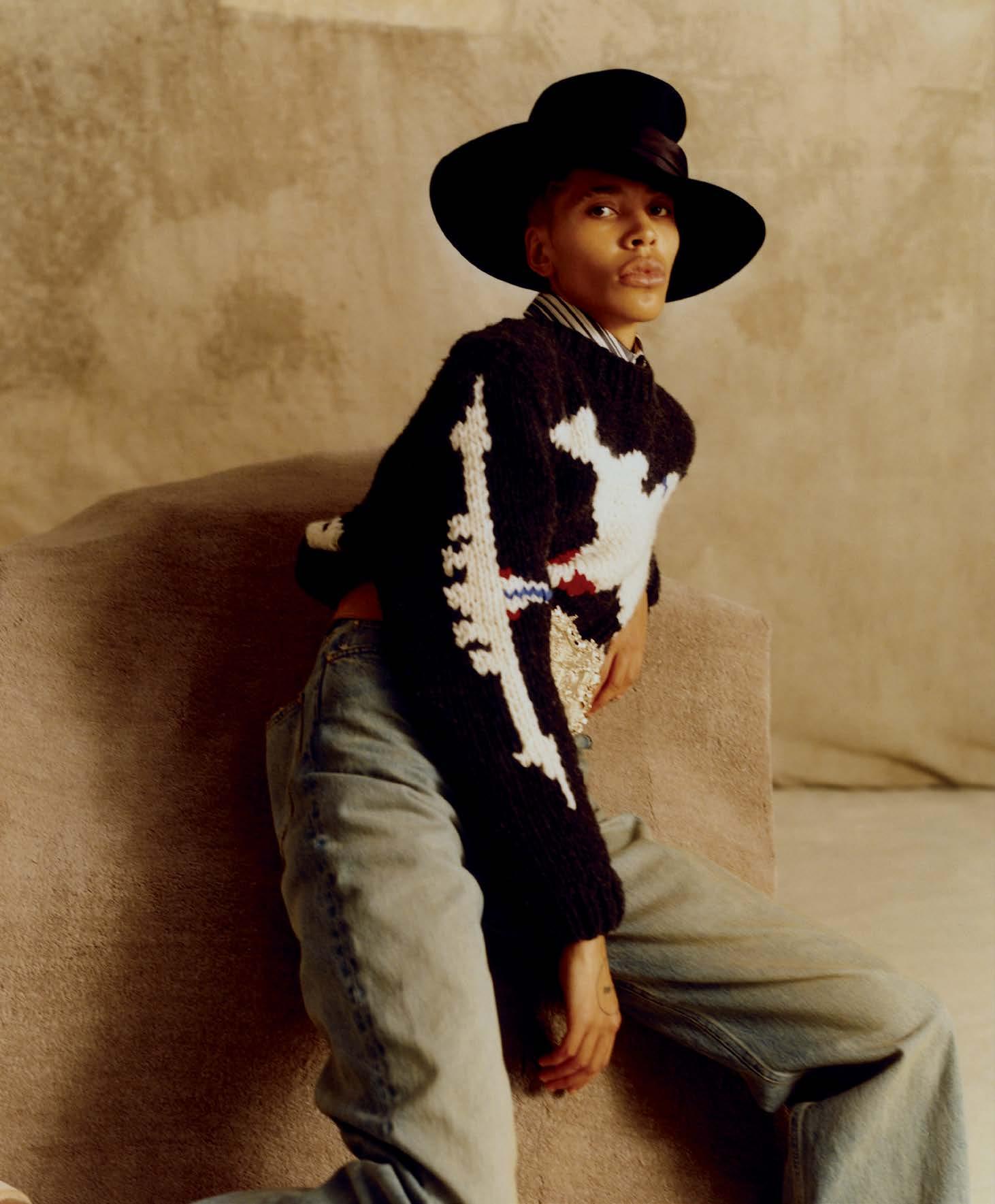
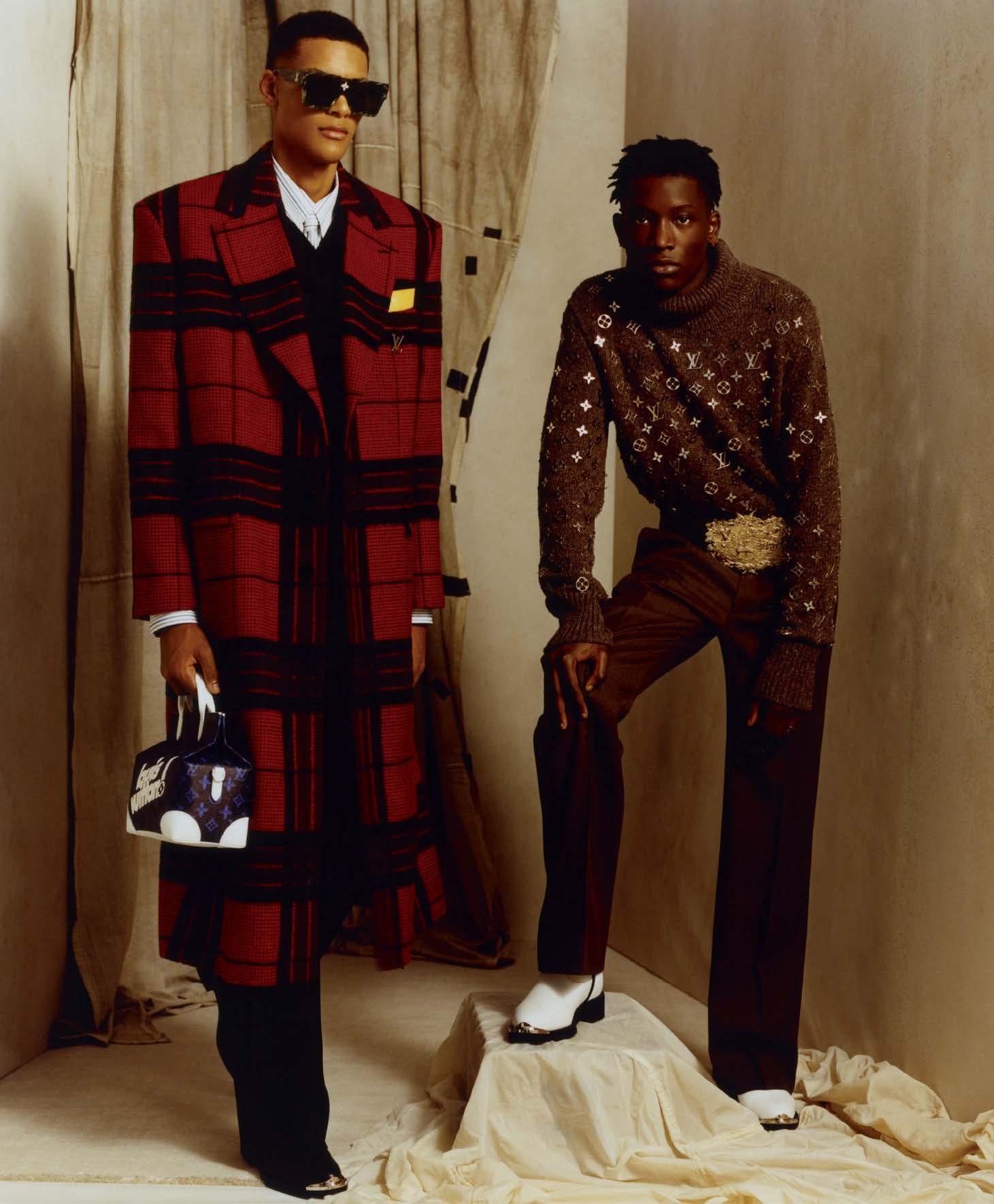


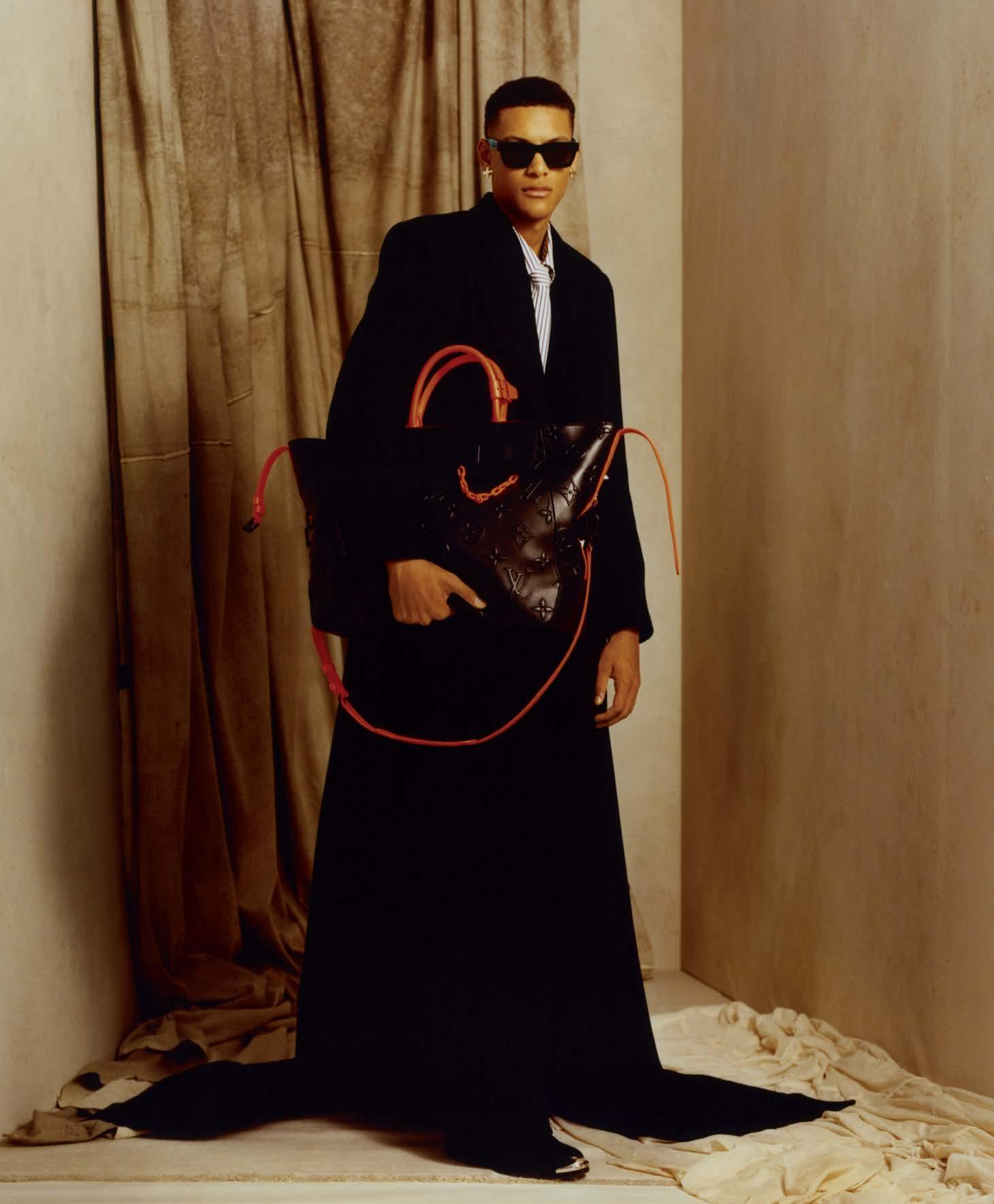
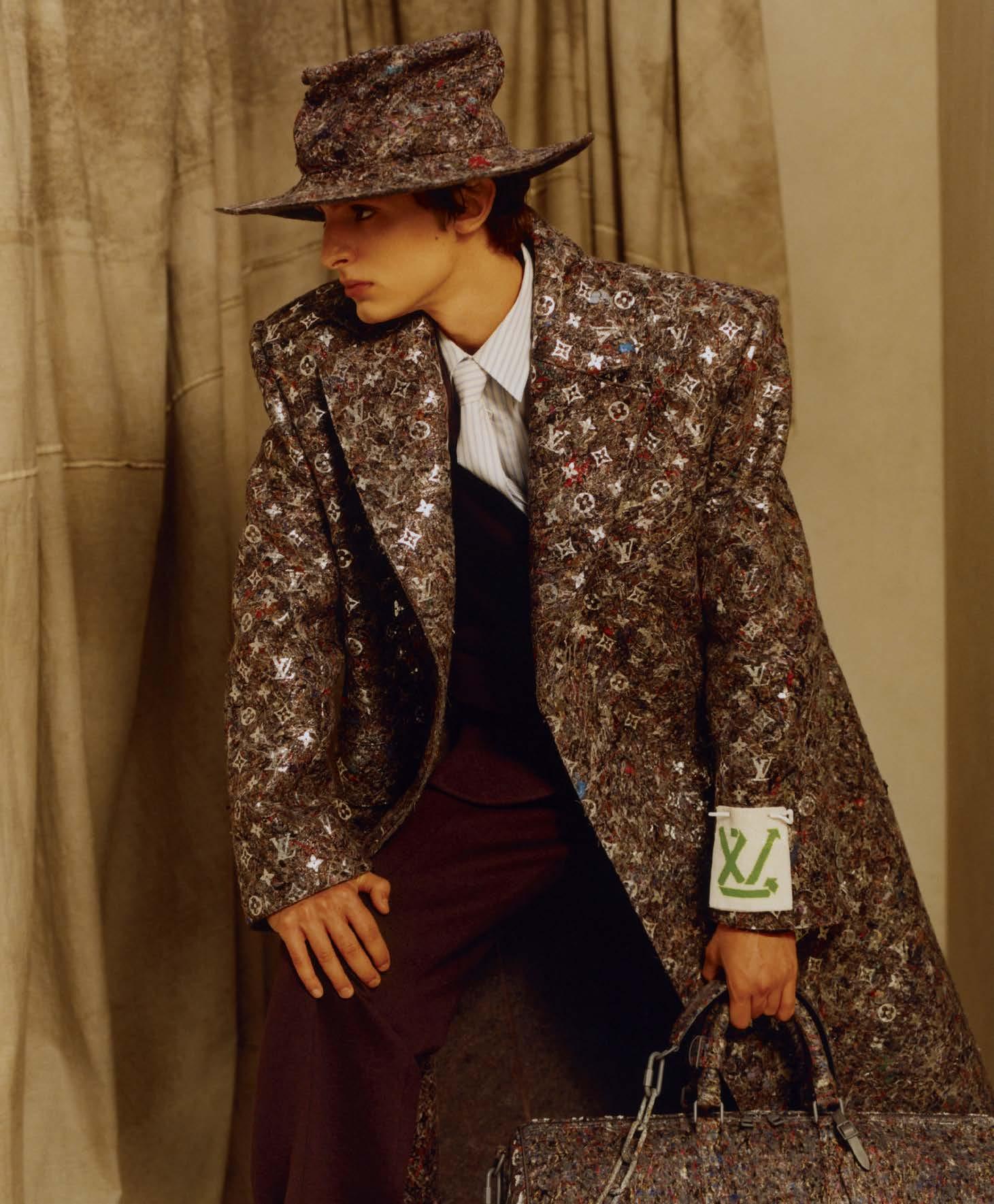

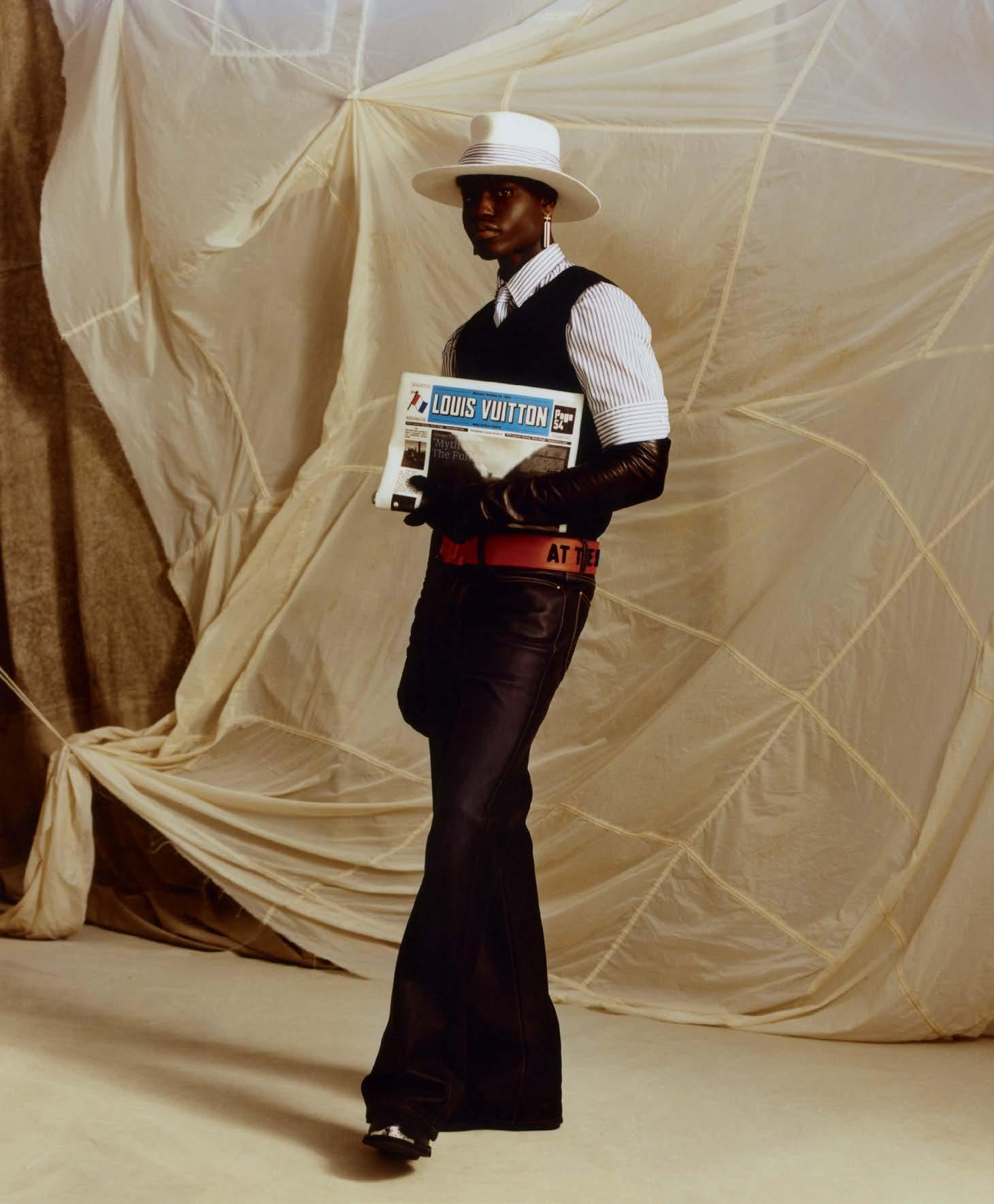
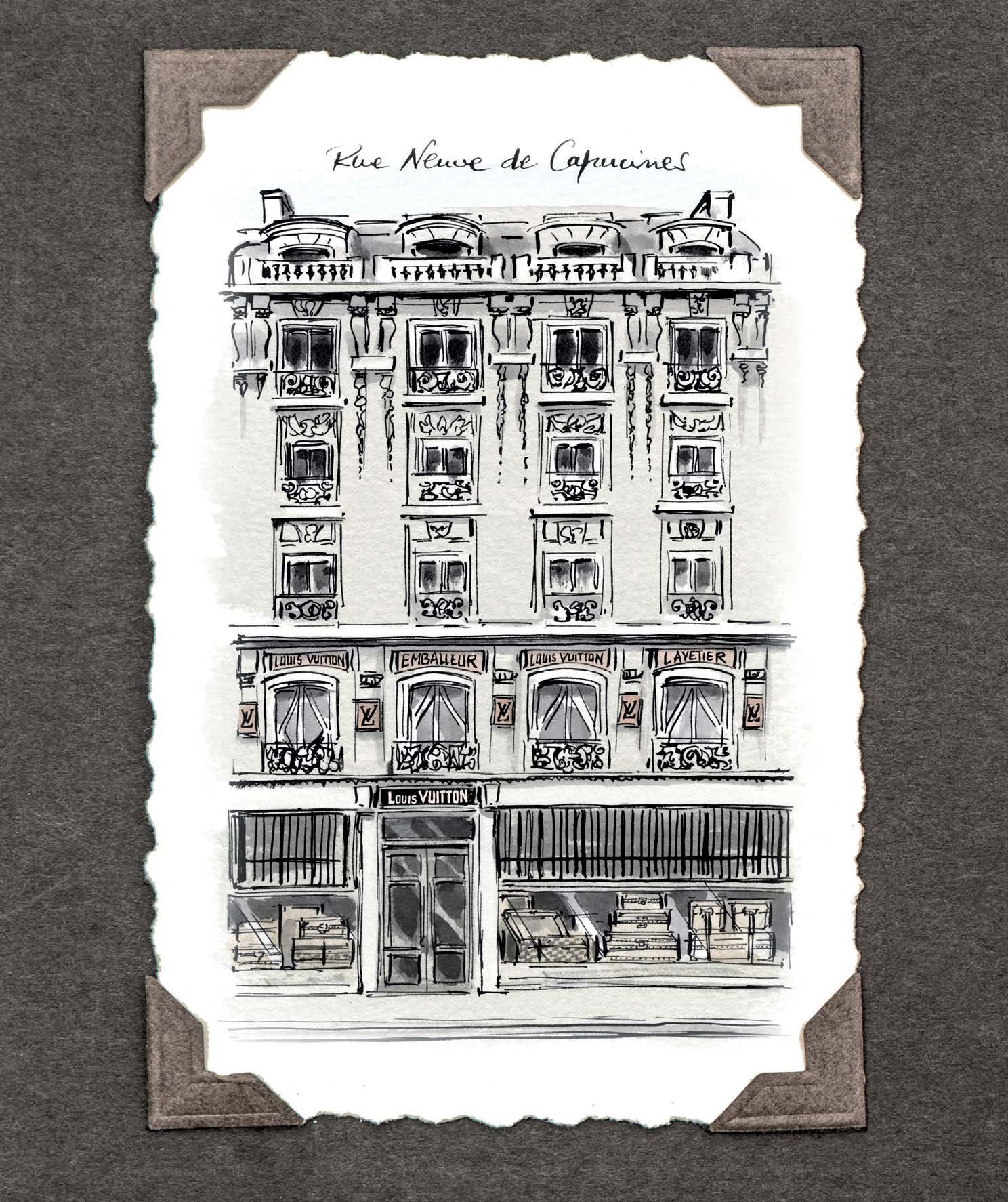

AS LOUIS VUITTON CELEBRATES A MILESTONE BIRTHDAY, HAUTE LIVING HAUTE LIVING TAKES A LOOK BACK AT THE HERITAGE OF THE LUXURY FASHION HOUSE AND TAKES A LOOK BACK AT THE HERITAGE OF THE LUXURY FASHION HOUSE AND HOW LOUIS VUITTON BUILT SUCH AN ICONIC, TIMELESS NAME. HOW LOUIS VUITTON BUILT SUCH AN ICONIC, TIMELESS NAME.
BY ADRIENNE FAUROTE BY ADRIENNE FAUROTE


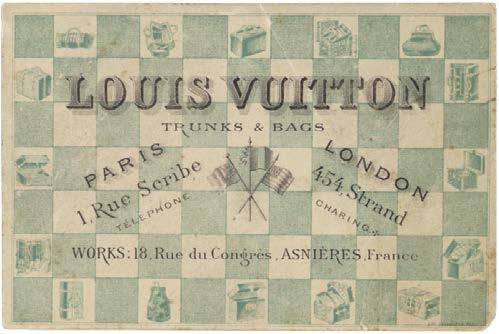
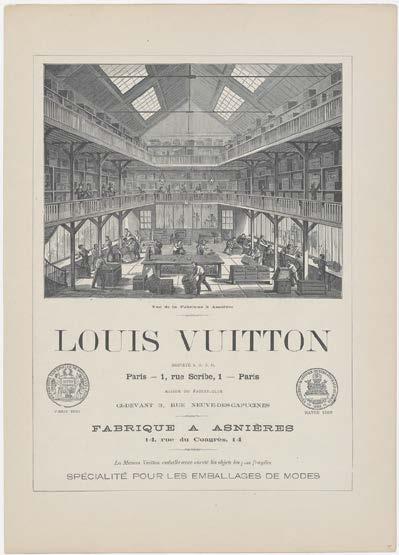

Top right: Louis Vuitton Trunks and Bags, advertising card, circa 1890. Bottom left: View of the Asnières workshop, engraved wood, 1873 by L. Guiguet. Bottom right: Dans la cour des ateliers, d’Asnières, vers 1888.
Come August 4, French fashion house Louis Vuitton will celebrate its 200th birthday, warranting a commemoration. The luxury brand has spent the last two centuries defining what it means to be a modern fashion house without losing sight of its inherent design DNA. Indeed, Louis Vuitton’s most famed design motifs, such as the LV logo, Monogram canvas and Damier Ebène, have stood the test of time, eternal classics that are continually adapting to the current style. Since 1854, Louis Vuitton has perceived the world of fashion through an innovative lens that honors the finest quality and the intricacy of details in each piece.
Today, Louis Vuitton is one of the world’s leading luxury houses, with a presence in 50 countries, over 460 stores, and countless runways and presentations. It has opened its doors to architects, artists and designers across the years, all while developing a range of diverse offerings such as ready-to-wear, shoes, accessories, watches, jewelry and fragrance. Over time, the house has also become notorious for debuting beloved handbag collections like the Neverfull, the Speedy, the Pochette and the Dauphine, which have not only become wardrobe essentials but also an integral part of the fashion vernacular. These products and motifs that have come to define the house are a true testament to Louis Vuitton’s commitment to craftsmanship. But most important, the house has shown unwavering faith in the spirit and creativity of its founder, Louis Vuitton, for the last 200 years—and that is the secret behind the its legacy.


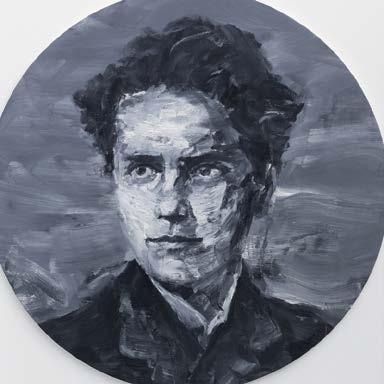
Louis Vuitton was recognized as a creative genius. He left home at 13 with carpentry skills and eventually landed in Paris, where he was apprenticed to the renowned trunk master and packer Romain Marechal. In the 1830s, it was common for trunk masters and packers to pack items for clients as they began their travels, which creatively challenged the craftsmen to design exclusive custom items.
It was at the Parisian atelier of Monsieur Maréchal that Vuitton found his calling — and eventually, his name — in the artisanal industry. Suddenly, the young boy was at the helm of a rapidly evolving social, political and economic culture, and it ultimately paved the way for his future. Vuitton spent 17 years perfecting the intricacies of the specialized trade of custom boxes and trunks before he founded his own maison.
In 1854, a remarkable year for the brand, Vuitton opened his own workshop on the rue Neuve-des-Capucines, in the heart of Place Vendome — a neighborhood all the major fashion houses would establish as their home during the next several decades. Here, Vuitton immersed himself in an elevated world of style; he grew close with Charles Frederick Worth, the founder of Parisian Haute Couture, who was later appointed trunk-maker to Empress Eugénie de Montijo, wife of Napoleon III. There was a revolution taking place in transport, and Vuitton was quick to understand — and invent — the significance of the “art of travel” through carrying luggage, bags and accessories that were as elegant as they were practical.
As a visionary artist and clever inventor, Vuitton redefined fashion packing by introducing new, sleek silhouettes and the adaptation of materials to the object’s function. His vision, one-of-a-kind attention to detail and ability to constantly modernize how people travel set the house apart from the competition. By the late 19th century, the house of Louis Vuitton had reached international fame, which led to the first store outside of France, in London, foreshadowing the massive expansion and admiration the house would continue to inspire.
Family home, garden view
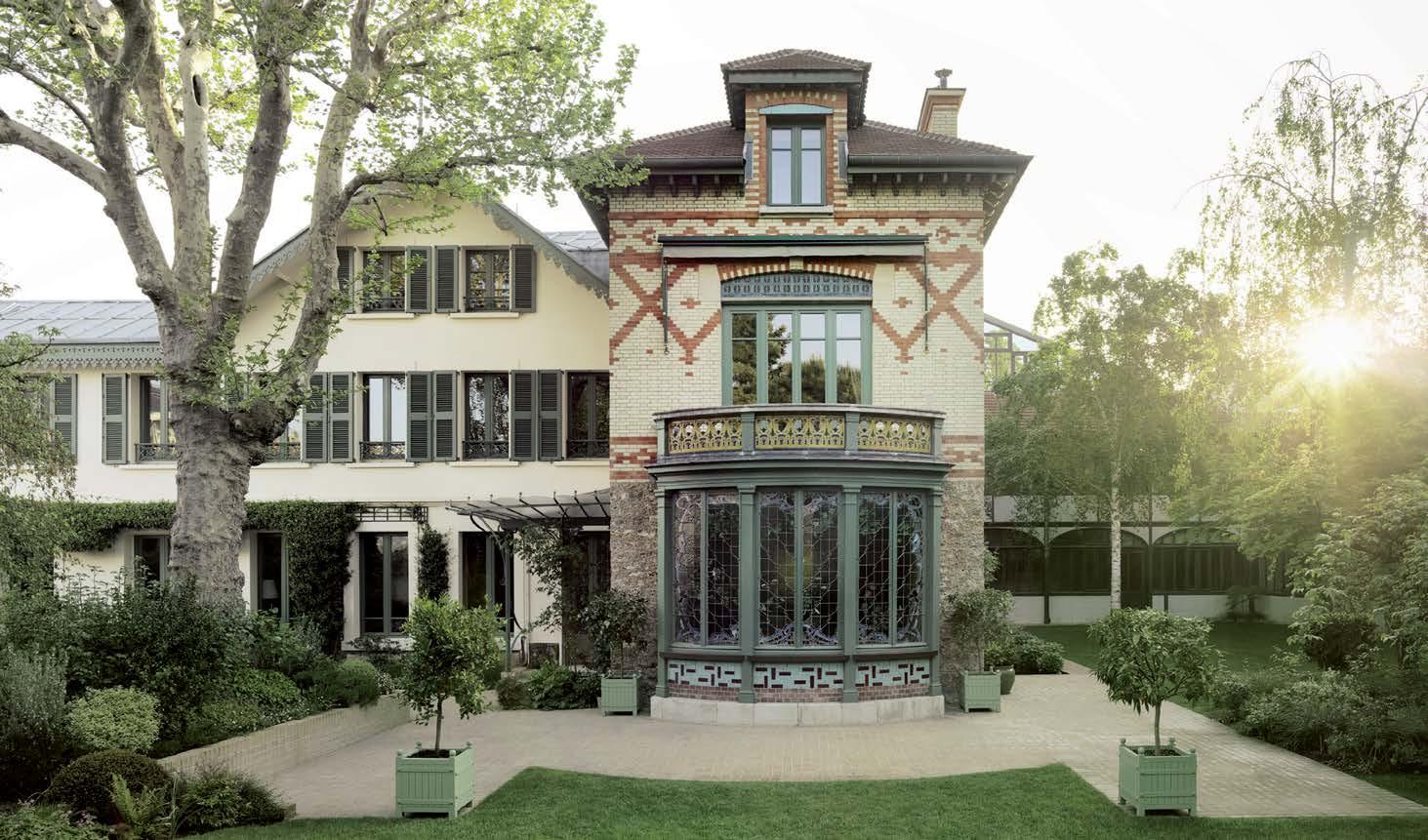
Because of his burgeoning success, Vuitton needed to expand his headquarters just shy of five years after founding his house. In 1859, he opened the atelier in Asnières, right outside the city center on the banks of the Seine. Another monumental moment for the brand, Asnières allowed for seamless delivery of the precious raw materials required for the Vuitton trunks by giving the company access to the Seine and one of the first railway lines in France.
Designed in the futuristic Eiffel style of the time, the vibrant, airy interior was a stark contrast from the typically dark, mundane workshops of Paris. Asnières became the heart of the house’s savoir-faire and at one point was the Vuitton family residence. The Vuitton children played in the garden, rowed on the nearby river and learned the family trade in the workshops before entering into the business.
Remaining authentic to the brand’s devotion to its heritage, the Asnières is still where the signature leather goods and special orders are designed and crafted today. From a classic flat trunk to a bespoke carrier for digital recording equipment, creations here span past, present and future with the same incredible detail mastered by the artisans familiar to Louis Vuitton himself: the careful applying of glue to Monogram canvas in order to stretch it across the wood structure; nailing the rigid lozine to the edges and corners of a trunk to ensure solidity; the malletage, or delicate crisscrossing of tape inside the trunk lid. Today, the Asnières workshops — which are also an exhibition for guests — are imbued with the same energy that Vuitton himself once instilled in his luxury empire.

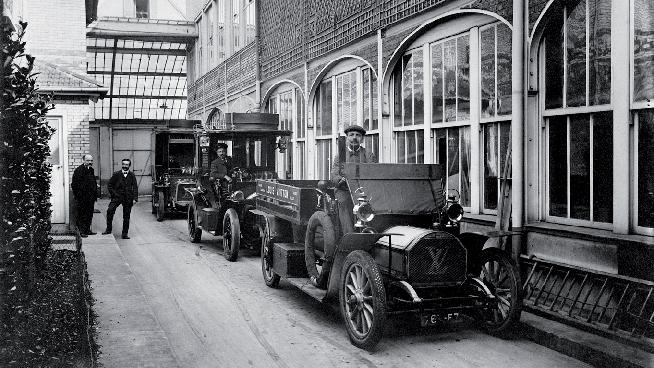
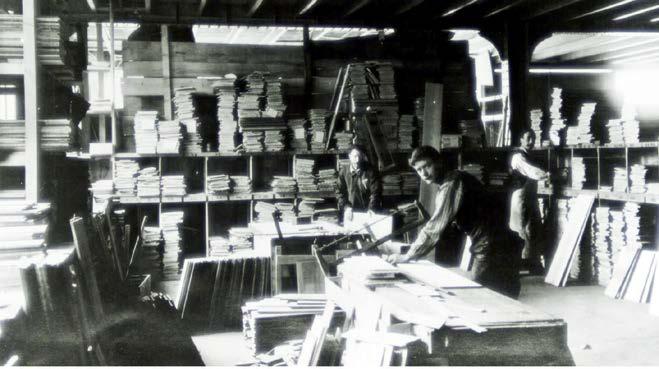


Living room of the family home

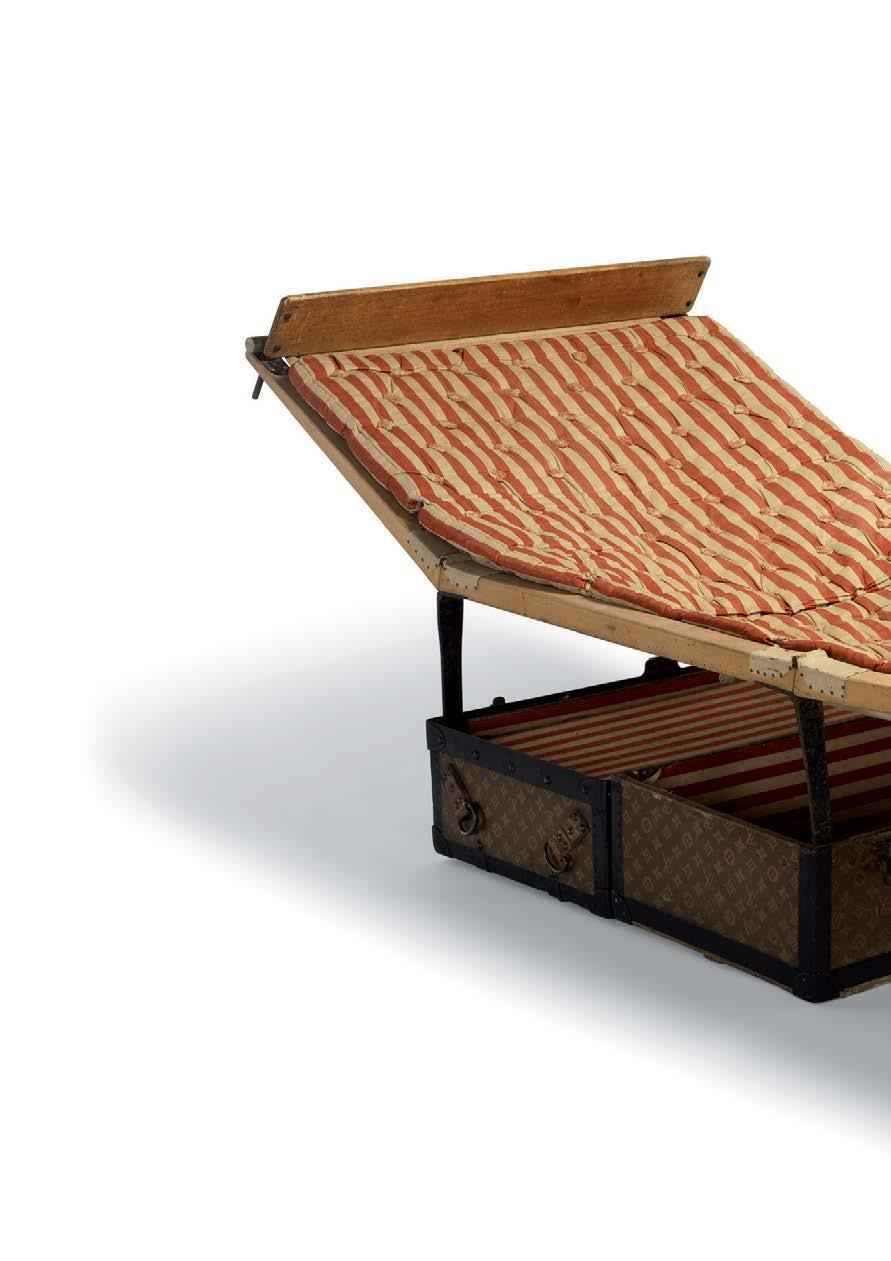
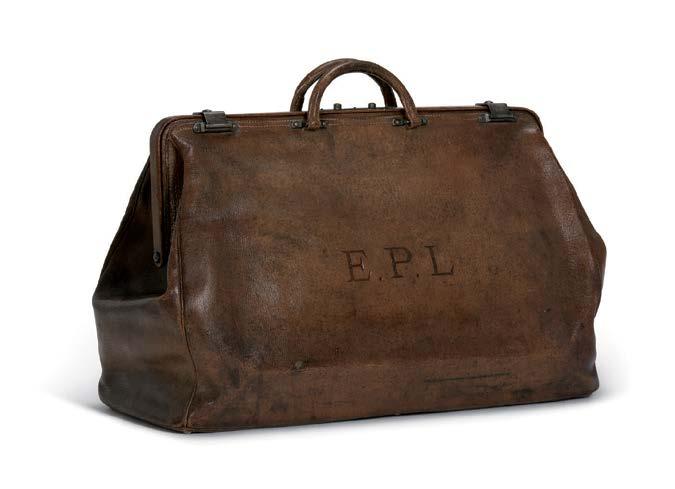
It should come as no surprise that the item that put Louis Vuitton on the map remains a best-seller today, evolving far beyond the founding of the company. From the beginning, Vuitton pronounced himself a “packer” of fashions: the 1850s were an era of opulent dresses, crinolines and wide skirts, requiring ingenious containers and skilled hands to pack and transport — à la Vuitton. Toward the end of the 1850s, he created Gris Trianon, a coated canvas that made luggage waterproof and drastically transformed the silhouette of the trunk by giving it a flat lid. This “flat” trunk was stackable — unlike the classic domed design — and it completely changed the way people traveled. It looked great, too: the iconic trunk proved that traveling could be both practical and aesthetically pleasing.
As rival manufacturers began to copy his innovations, Vuitton opted for increasingly complex designs, migrating from gray cloth to colored stripes and later to a checked design known as the Damier. Then, in 1896, everything changed. His eldest son, GeorgesLouis Vuitton, created the Monogram in honor of his late father, and a true icon was born. A symbol that is just as revolutionary today as it was then, the interlaced initials, encircled rounded flower, and four-petal flower encased in a concaved diamond — the legendary Monogram canvas — became one of the first successful exercises in luxury branding.
As an industry thought-leader, Louis Vuitton won numerous prizes at the World Fairs held in Paris in the late 19th and early 20th centuries, awarding the finest advances in craftsmanship and technology — values that will forever be woven into the brand’s DNA.
Since the first trunk, Louis Vuitton has designed many iterations, from older versions like the Bed Trunk, Library Trunk, Wardrobe Trunk and Shoe Trunk to more contemporary styles like the Malle Coiffeuse, DJ Trunk and LV Speakers — all paying homage to the house’s heritage.
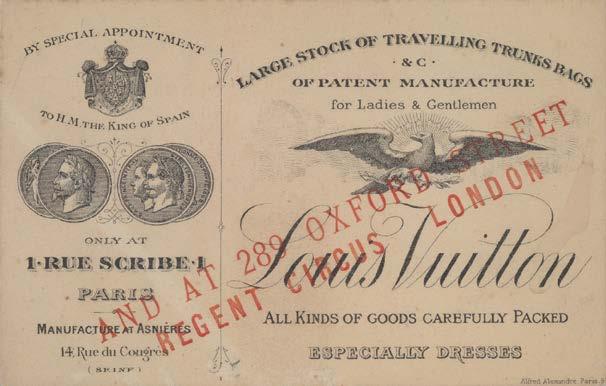

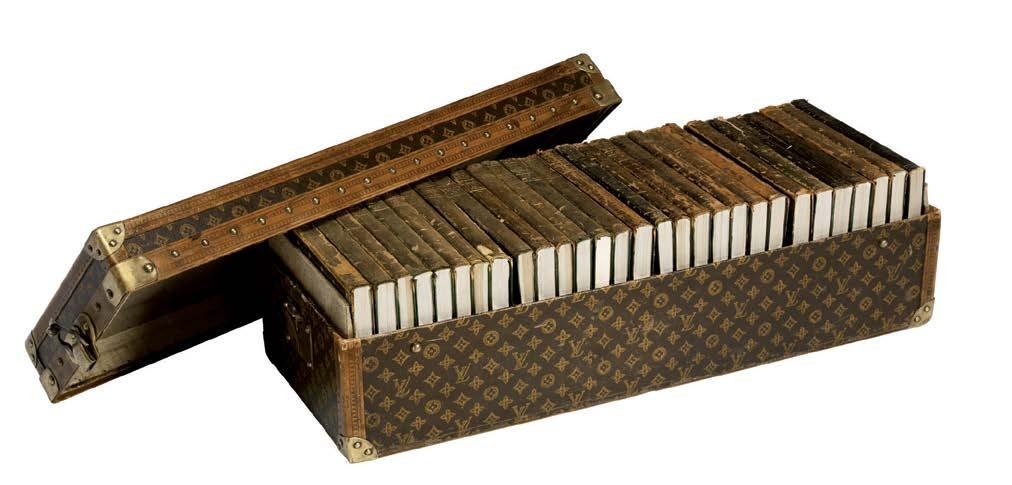
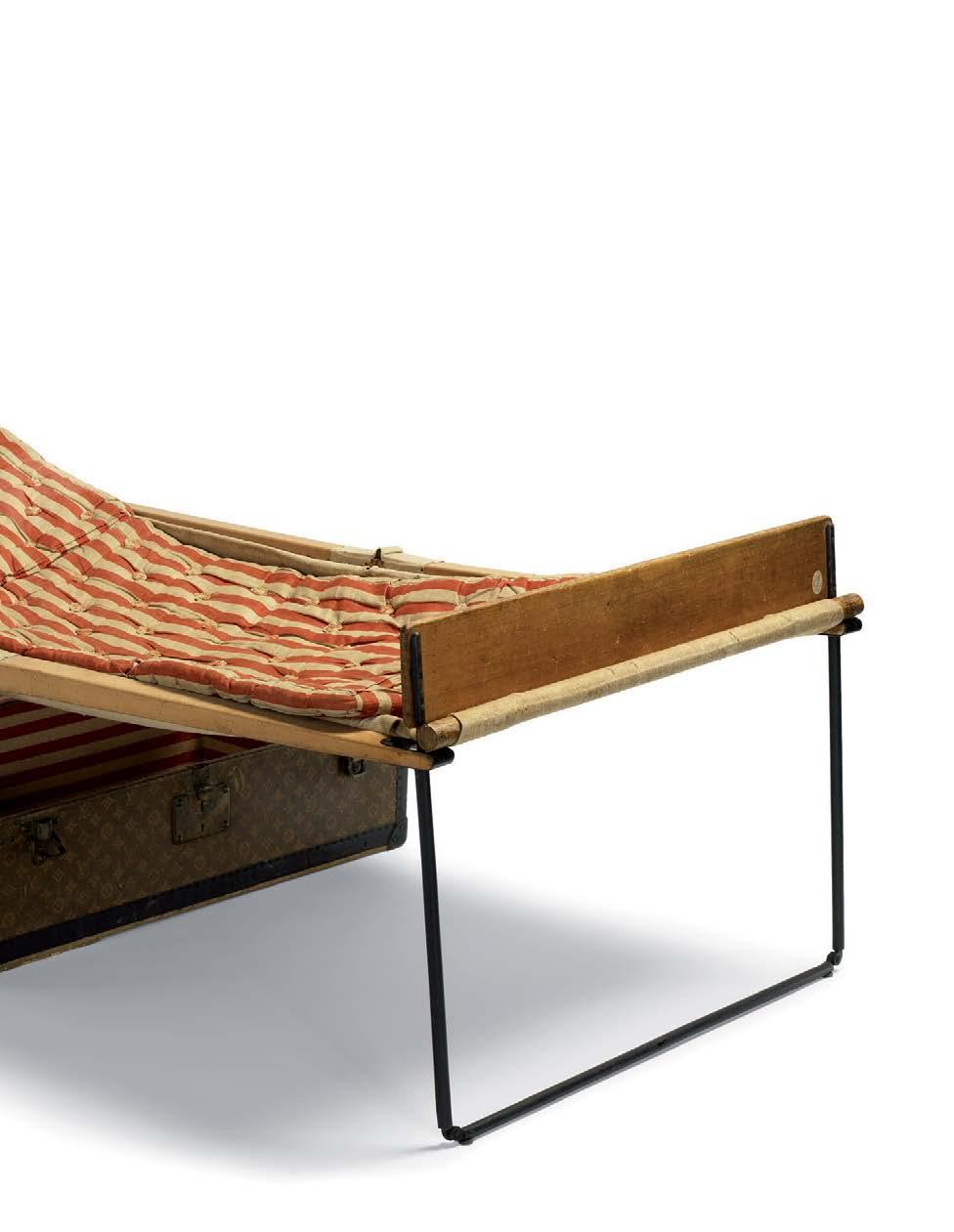
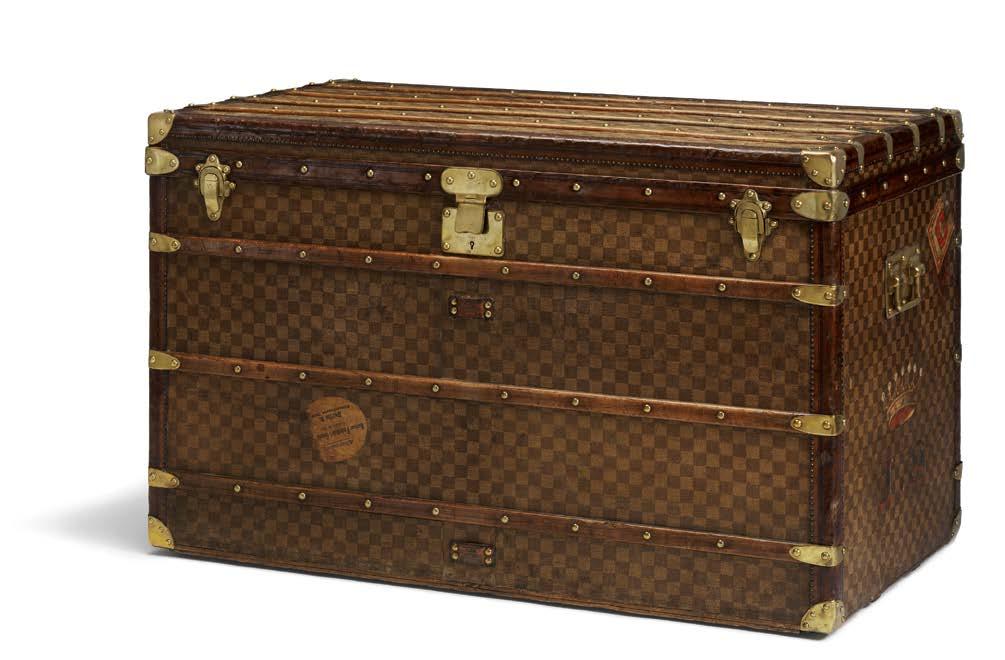
Bottom left: Detail of the Damier canvas (1888). Far left: Advertising chart in English, circa 1885. Center: Bed trunk (1905). Bottom right: Custom case ordered in 1910 by the publisher of the Encyclopedia Britanica to deliver the 29-volume 11th edition to customers. Far right, top to bottom: Finishing touches on the Nervurage trunk’s lining; exterior dressing of the Entoilage trunk in Monogram canvas; securing the outer protective Iozine edging to the Lozinage trunk with nails.
